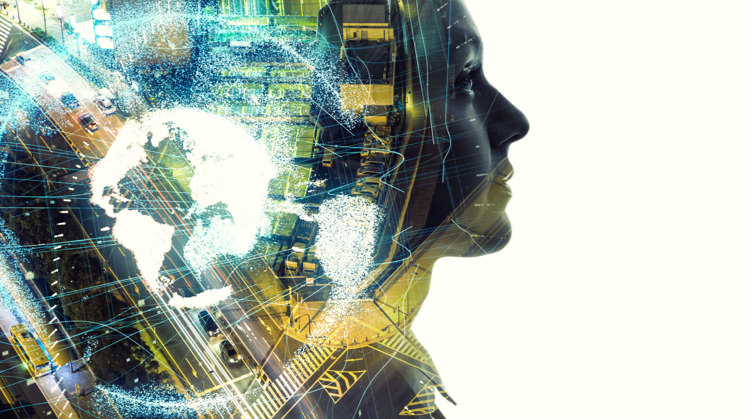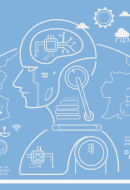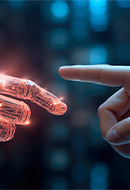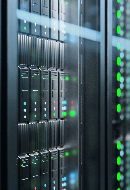Edge computing
Edge Computing: quicker, smarter, and more sustainable device
Self-driving vehicles, augmented reality and eHealth apps are just some of the innovations that we can put to use and optimise thanks to Edge Computing, a new paradigm that relocates cloud data processing to its source, reducing latency and energy consumption. We'll give you a basic insight into the intricacies of this technology, which is linked to the IoT (Internet of Things) and the 5G network.


Edge Computing reduces energy consumption, bandwidth and latency.
Wristbands that monitor our health, autonomous cleaning robots, smart traffic lights to regulate movement, drones to control harvesting, and so on. We are becoming increasingly surrounded by more and more internet-connected devices on an information super-highway. This is what's known as the Internet of Things (IoT), one of the key technologies of the Fourth Industrial Revolution which is set to shape the future.
By 2021, according to expert forecasts, the world will have 30 billion connected devices transmitting data to the cloud. This immense quantity of information is stored and processed in data centres to implement improvements, and is a fundamental part of Cloud Computing. But because of the huge amount of data generated it is a costly, slow and energy-hungry process. And this is where new solutions like Edge Computing come into play.
What is Edge Computing and its connection with the IoT
Edge Computing is a new computing paradigm in which IoT data are processed on the periphery of the network (cloud edge) in the same source that generates them, or as close to it as possible. Edge Computing can be compared with regional governments set up in a country to avoid having to pass all management processes through the central government, or, to complete the analogy, through Cloud Computing.
The Edge Computing ecosystem
Edge Computing relocates cloud data processing to the actual devices that generate them, reducing latency and making real time response possible from things like autonomous vehicles.

platforms

aeroplanes


factories


traffic lights

street lighting


buildings




rail network


low latency
medium latency
isn't a problem
Data Centre
Edge Computing Vs Cloud Computing. Advantages and differences
Edge Computing reduces energy consumption, bandwidth and latency (response time) which arises from sending a lot of information for processing in remote data centres. Moreover, this technology offers other advantages over Cloud Computing:
-
Diversification: over the coming years as the number of IoT devices increases exponentially, Edge Computing will be ever more important as a strategy to avoid system saturation.
-
Cybersecurity: since the information is spread over multiple devices, there will be less data in cloud environments, so if one environment is attacked the damage will be minimal.
-
Speed: since the data are processed at source, the immediacy of response allows for the existence of such useful things as self-driving vehicles and emergency life-saving apparatuses.
In this way, Edge Computing complements Cloud Computing by improving the usability of devices while still sending data to the cloud for deeper analysis and improvements. Between the two we have Fog Computing, which dissipates the cloud into a mist and spreads it around the world to bring it closer to connected devices by processing data, not at the actual source, but at nearby network hubs.
Applications and examples of Edge Computing
The virtues of Edge Computing will allow numerous technologies to be integrated into our environment — homes, vehicles, cities, etc — and many others to be optimised. Let's take a look at some of them:
 Autonomous vehicles
Autonomous vehicles
Intelligent cars gather information about their surroundings while on the move — traffic signals, other vehicles, pedestrians, etc —. The processing speed made possible by edge computing is crucial for driverless vehicles to be able to react in real time to driving necessities and make this new mode of transport viable.
 Smart cities
Smart cities
Smart cities depend on massive inputs of data, and the inherent decentralisation of Edge Computing is the perfect solution to avoid system collapses while at the same time improving the efficiency of all the elements of a smart city: smart grids, self-driving vehicles, street lighting, public transport, etc.
 Video games
Video games
The lower the latency in online video games, the faster gamers' reactions can be. Virtual reality and augmented reality will also be given a boost by this breakthrough, improving the provision of remote services like health care and training.
 Smart factories
Smart factories
Thanks to analysis of all the data generated by the machinery in a factory, Industry 4.0 can benefit from smarter production processes that increase efficiency, quality and sustainability, as well as from better interaction between cobots (collaborative robots) and humans, preventing accidents and minimising their repercussions.
 Smart power grids
Smart power grids
Driven by Edge Computing, smart grids can respond to demand in real time, making way for a more efficient and better quality electricity supply by improving, amongst other things, incident prevention and its duration.
Edge Computing and its relationship with other technologies
As well as the Internet of Things, Edge Computing has a close relationship with other key technologies in the digital revolution. Amongst these, the following are worthy of note:
-
5G: Edge Computing and the 5G network have a symbiotic relationship. One example is the driverless vehicle, where real time reactions depend as much on the processing speed of edge computing as on the low latency of 5G. The benefits offered by each technology depend on the other technology to reach their maximum potential.
-
Big Data: not all the information transmitted by IoT devices to form the Big Data universe is actually useful, which hinders analysis due to a surfeit of information. This is where edge computing plays an important filtering role by only sending information to the cloud that is relevant, based on pre-established parameters, thereby reducing energy consumption, too.
-
Machine Learning: Machine Learning algorithms combined with Edge Computing allow connected devices not only to react in real time, but also to learn patterns as they go to help them make smarter decisions in the future.

What is big data and what is it used for?
Big data analyses data to turn it into information.

What is Artificial Intelligence?
Are we aware of the challenges of Artificial Intelligence?

History of artificial intelligence
Birth, applications and future trends.






